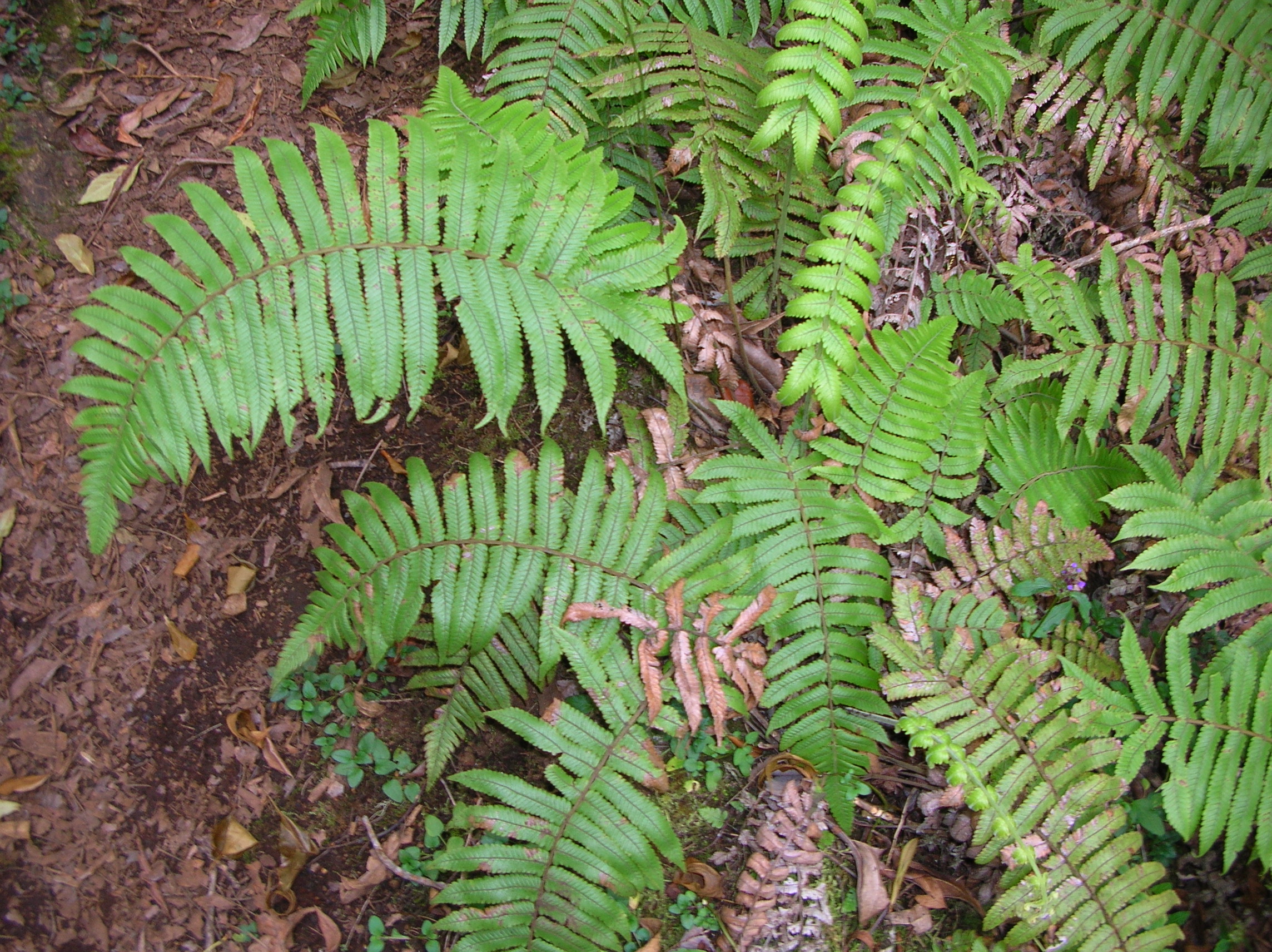- Thelypteridaceae
Taxobox
name = Marsh Fern family

image_width = 240px
image_caption = "Cyclosorus cyatheoides"
regnum =Plant ae
divisio =Pteridophyta
classis =Pteridopsida
ordo =Athyriales
familia = Thelypteridaceae
subdivision_ranks = Genera
subdivision =
*"Phegopteris "
*"Thelypteris "
*"Metathelypteris "
*"Amauropelta "
*"Oreopteris "
*"Cyclosorus "
*"Pneumatopteris "Thelypteridaceae is a family of about 900 species of
fern s.The ferns are terrestrial, with the exception of a few which are
lithophyte s (grow on rocks).A. R. Smith, K. M. Pryer, E. Schuettpelz, P. Korall, H. Schneider, P. G. Wolf. 2006. "A classification for extant ferns". "Taxon" 55(3), 705-731 (pdf [http://www.pryerlab.net/publication/fichier749.pdf here] )] The bulk of the species are tropical, although there are a number of temperate species.These ferns typically have creeping
rhizome s. Thefrond s are simplypinnate to pinnate-pinnatifid . There is either no frond dimorphism or only mild dimorphism, either openvenation or very simpleanastomosing . The sori are mostly reniform in shape and have indusia, except for the "Phegopteris" group.Classification
At one time,specify all thelypterioid ferns were included in the genus "
Dryopteris " because of the sorus shape. However, there are a great many differences between the groups, and these plants are now segregated in their own family.cite web | url = http://www.efloras.org/florataxon.aspx?flora_id=1&taxon_id=10887 | work = Flora of North America | title = Thelypteridaceae]Some researchers include the entire family
Thelypteridaceae in the genus "Thelypteris "; others divide the family into as many as 30 genera. An intermediate position is to place the bulk in "Thelypteris" (which can then be divided into subgenera and sections corresponding to the genera of other authors) but to separate out "Phegopteris " and "Macrothelypteris ". Another choice is to divide the family into a half a dozen or so genera.This family includes several complexes of species that are difficult to distinguish, and seem to represent a remarkable evolutionary radiation.
Recent genetic evidence shows that the family is clearly monophyletic. The same genetic studies show that the traditional genus "Phegopteris" is, in fact, a clearly segregate group that diverges at the very base of the
family tree . In fact, this particularclade also includes the genera "Pseudophegopteris " and "Macrothelypteris ", which are here included in the larger genus "Phegopteris ". Similarly, "Coryphopteris" is included here in the genus "Metathelypteris ", "Parathelypteris" is included in "Amauropelta ", and a large group of genera are included in "Cyclosorus ".References
Wikimedia Foundation. 2010.
